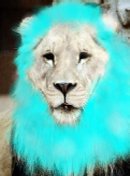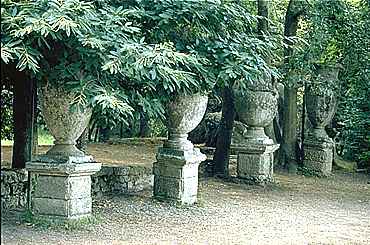
Lessons in the Snow Lion's Garden
Lesson One: Words of Welcome, and Words of Conjuring.

 Greetings and salutations! Welcome to the Academy, and to my garden! Pull up a rock, or sit on the moss, and together we will explore the mysterious principles of HyperText Mark-up Language, that strange tongue which, if spoken properly, results in the manifestation of Home Pages! When spoken properly, HTML summons creations of beauty an wonder to the Internet. However, when misused or spoken improperly, HTML can cause unspeakable things to happen!
Here, in my garden, we will delve into the secrets of this mysterious language an learn by means of what magic words and phrases you can cause strange and beautiful things to come into being! How well I remember when I was but a novice to the mysterious HTML programming language! And I remember my first homepage with many a smile at my clumsiness! But, in time and with practice, I mastered many secrets of HTML.
Greetings and salutations! Welcome to the Academy, and to my garden! Pull up a rock, or sit on the moss, and together we will explore the mysterious principles of HyperText Mark-up Language, that strange tongue which, if spoken properly, results in the manifestation of Home Pages! When spoken properly, HTML summons creations of beauty an wonder to the Internet. However, when misused or spoken improperly, HTML can cause unspeakable things to happen!
Here, in my garden, we will delve into the secrets of this mysterious language an learn by means of what magic words and phrases you can cause strange and beautiful things to come into being! How well I remember when I was but a novice to the mysterious HTML programming language! And I remember my first homepage with many a smile at my clumsiness! But, in time and with practice, I mastered many secrets of HTML. HTML is written in special units called "tags", which means that each command is bracketed within greater than/less than signs, thus:
HTML is written in special units called "tags", which means that each command is bracketed within greater than/less than signs, thus: The < BODY > command ensures that such things as background color, background images, and text colors will appear as you command them to appear. If the < BODY > tag does not appear, yoru computer will use certain pre-specified settings called "defaults", which means that, instead of a colorful homepage, you will see a grey background with black text, which may be a good thing for someone who is putting all the works of Shakespeare on their page and needs every available kilobyte of memory....but for those who aspire to create beauty, it tends not to be a good thing!
While we are on the subject of color, perhaps, now would be a good time to explain the commands for controlling the colors on your homepage.
The < BODY > command ensures that such things as background color, background images, and text colors will appear as you command them to appear. If the < BODY > tag does not appear, yoru computer will use certain pre-specified settings called "defaults", which means that, instead of a colorful homepage, you will see a grey background with black text, which may be a good thing for someone who is putting all the works of Shakespeare on their page and needs every available kilobyte of memory....but for those who aspire to create beauty, it tends not to be a good thing!
While we are on the subject of color, perhaps, now would be a good time to explain the commands for controlling the colors on your homepage. But, perhaps you wish not to conjure up a solid color for your background, but would rather create ambience with a background image? How then is that to be done? If you wish to use a graphic image for a background rather than a solid color, the BGCOLOR tag must be changed accordingly. It must then read BACKGROUND="filname.jpg". However, note that there be different species of graphic image in use on the Internet, and you will have to distinguish between a .jpg or a .gif file accordingly. Thus, is the graphic is not a .jpg but a .gif, you must alter the command to read BACKGROUND="filename.gif". You must also be certain that the image you wish to use is stored on your server. NEVER LINK TO AN IMAGE AT ANOTHER SITE, BUT ALWAYS SAVE IT TO YOUR HARD DRIVE, THEN UPLOAD IT TO YOUR SERVER. LINKING TO ANOTHER SERVER FOR AN IMAGE TAG IS CALLED BANDWIDTH THEFT, AND IT IS A VIOLATION OF THE ETHICS OF THE INTERNET. So sorry.....my CAPS LOCK key was stuck! But you probably have gathered by now that, whenever you propose to conjure graphics images into your homepage, there are certain ethical standards to follow, such as giving credit to the talented person who made the image, and not linking to images on other sites, and not using copyrighted images without express permission of the owner.
But, perhaps you wish not to conjure up a solid color for your background, but would rather create ambience with a background image? How then is that to be done? If you wish to use a graphic image for a background rather than a solid color, the BGCOLOR tag must be changed accordingly. It must then read BACKGROUND="filname.jpg". However, note that there be different species of graphic image in use on the Internet, and you will have to distinguish between a .jpg or a .gif file accordingly. Thus, is the graphic is not a .jpg but a .gif, you must alter the command to read BACKGROUND="filename.gif". You must also be certain that the image you wish to use is stored on your server. NEVER LINK TO AN IMAGE AT ANOTHER SITE, BUT ALWAYS SAVE IT TO YOUR HARD DRIVE, THEN UPLOAD IT TO YOUR SERVER. LINKING TO ANOTHER SERVER FOR AN IMAGE TAG IS CALLED BANDWIDTH THEFT, AND IT IS A VIOLATION OF THE ETHICS OF THE INTERNET. So sorry.....my CAPS LOCK key was stuck! But you probably have gathered by now that, whenever you propose to conjure graphics images into your homepage, there are certain ethical standards to follow, such as giving credit to the talented person who made the image, and not linking to images on other sites, and not using copyrighted images without express permission of the owner.